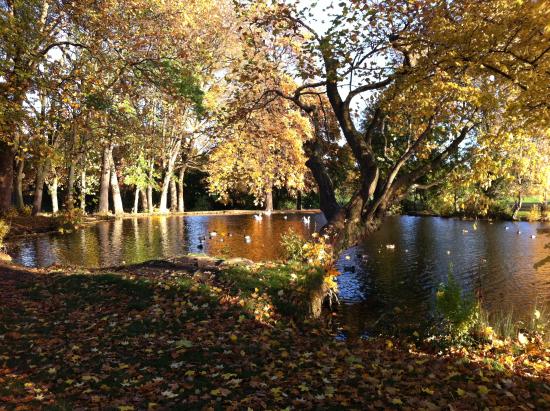Out of interest, here follow two 19th century descriptions from gazeteers of the time: ‘A chapelry in Bibury parish, Gloucester; 6 miles NE of Cirencester r. station. Post town, Fairford, under Swindon. Acres, 1,190. Rated property, £1,454. Pop., 181. Houses, 49. The manor belongs to Sir W. A Musgrave. The living is annexed to Bibury. The church is good, and there is a national school’. As described by John Marius in 1870-72, Wilson’s Imperial Gazetteer of England and Wales
‘Winson, a township-chapelry in Bibury parish, Gloucestershire, 2 miles from Foss Cross station on the Midland and South-Westem Junction railway, and 6 NE of Cirencester. Post town, Fairford (S.O.); money order and telegraph office, Bibury. Acreage, 1216; population, 134. The living is annexed to Bibury. The church is Early English and Perpendicular, with a Norman porch. The Comprehensive Gazetteer of England and Wales, 1894-5
One would not know now that there was, until 1961, a railway station at nearby Foss Cross: it was on the Midland and South Western Junction Railway. The station opened in 1891 with the section of the line between Cirencester Watermoor and the junction at Andoversford with the Great Western Railway’s Cheltenham Lansdown to Banbury line, which had opened in 1881. It was an isolated station, with the nearest village at Chedworth, which obtained its own station shortly after, which meant that ultimately only one passenger per day was using Foss Cross. However, until its closure, it compensated through goods carriage – stone from quarries, and agricultural traffic.
Winson remains a quiet hamlet. The old school is now a residence (you can tell which building housed the school by its large window and bell housing), whilst the 12th-century church is small compared to its siblings in neighboring villages. It is worth a look, however, because the churchyard has some handsome tombs, and there is some interesting decoration in the chancel. The view from the churchyard across the village is exceptionally satisfying.
The elegant house overlooking the green dates from 1740 and was built for Richard Howse, Surgeon-General to the Army. A well-proportioned, although small, classical house in which the eminent Scottish architect, James Gibbs, who designed St. Martin-in-the-Fields in London, may have been involved as Howse, would have known Gibbs in connection with St Bartholomew’s Hospital, of which Gibbs was a governor.


0 Comments